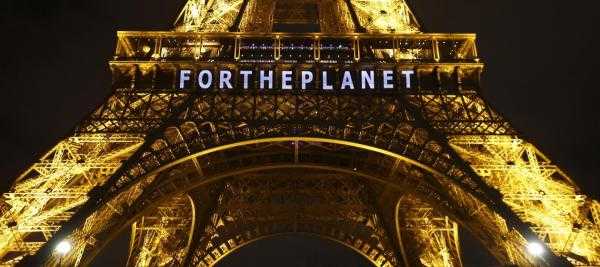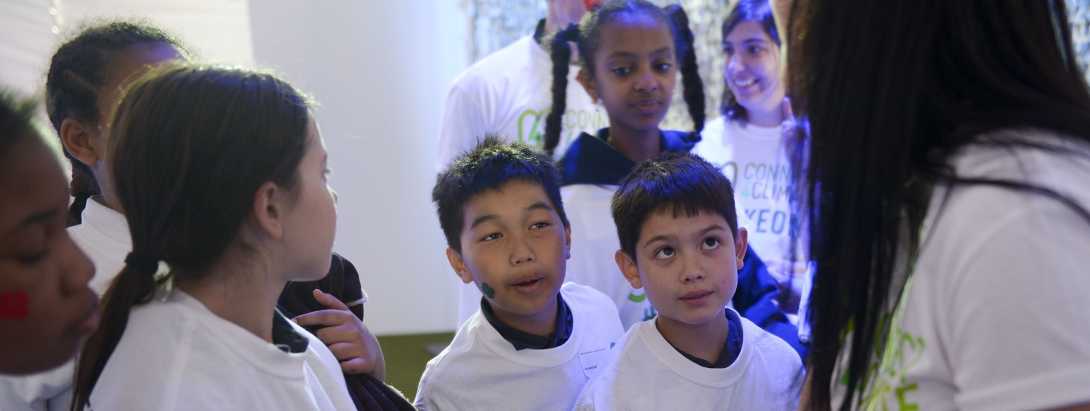
Film4Climate has released the shortlist of the finalists for the Young award, which recognizes the next generation of talented young filmmakers.
<h3>"Are you ready to change the world?" by Laura Duquette, Canada</h3>
<p>[video:https://youtu.be/74Nn-0G3nzU]</p>
<h3>"Change for the Better" by Leanne Choo, Singapore</h3>
<p>[video:https://youtu.be/ee6cerjXUDU]</p>
<h3>"Endangered porpoises" by Lula Chou, USA</h3>
<p>[video:https://youtu.be/0dGR7a2VZKY]</p>
<h3>"My Lagoon" by Andrea Aspront, Mexico</h3>
<p>[video:https://youtu.be/gcTV_9iYLek]</p>
<h3>"Pale Blue Dot" by Antonio Heitor Cantão, Brazil</h3>
<p>[video:https://youtu.be/V2NuDrT_PJk]</p>
<h3>"A Sun at Night" by Rameshwar Bhatt, India</h3>
<p>[video:https://youtu.be/BB7qWDXBr_w]</p>
<h3>"Carbon Funk" by the Maui Huliau Foundation, USA</h3>
<p>[video:https://youtu.be/k_N3DtQy4AQ]</p>
<h3>"Caring for the Atmosphere" by the Mants'ase Children's Home Mohanuoa Chabane, Lesotho</h3>
<p>[video:https://youtu.be/bj6Ff5MJurY]</p>
<h3>"Discovering Alaska" by Simon Geisker, USA</h3>
<p>[video:https://youtu.be/kUiT6iVndUo]</p>
<h3>"Kiribati's Dance - Decrease Beef Consumption" by Seoyeon Shin, South Korea</h3>
<p>[video:https://youtu.be/QdUJ5n9IQms]</p>
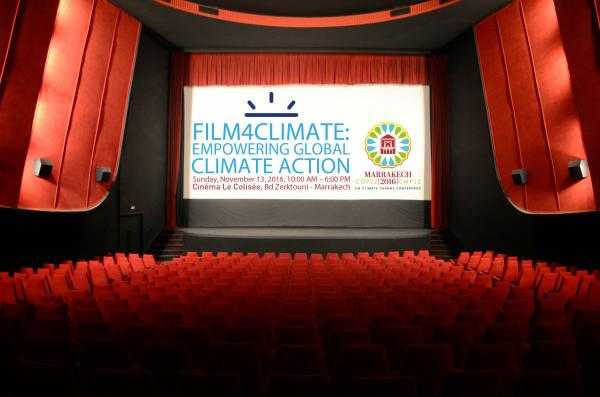
860 videos from 155 countries. Connect4Climate has received inspiring climate change solutions stories from young people around the world that raised their voices through the Film4Climate Global Video Competition showing that it is possible to take on climate change. We truly believe that young people can alter the course of history and Connect4Climate is extremely proud to be their platform, by helping them transform the planet. As so we are truthfully pleased to award them for their incredible work, creativity, and time invested solving climate change.
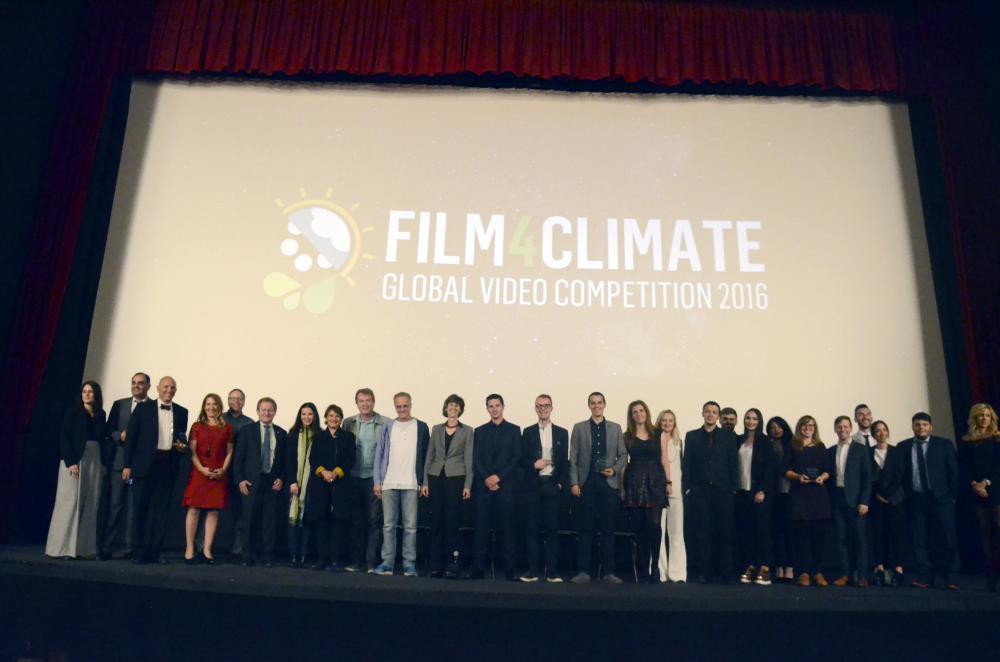
Connect4Climate presents you the Film4Climate Global Video Competition winners, selected by renowned filmmakers, climate influencers, world leaders, and communication professionals, headed by the Italian film director Bernardo Bertolluci (The Conformist, Last Tango in Paris). The winners were announced at the United Nations Climate Conference (COP22) at a day celebrating the power of youth, cinema and the creative industries to generate climate action and tackle climate change.
"Movies have the power to change minds and hearts", H.E. Hakima El Haite, Delegate Minister in Charge of Environment, Morocco, Special Envoy for Mobilization of COP22, and High-Level Champion of the United Nations Framework Convention on Climate Change (UNFCCC).
Due to the high quality of the videos received we have decided to attribute special mentions according to the film's geographical location and type of content.

FILM4CLIMATE VIDEO COMPETITION WINNERS TO BE ANNOUNCED AT THE UNITED NATIONS CLIMATE CONFERENCE COP22 AT A DAY CELEBRATING THE POWER OF YOUTH AND CREATIVITY OF CINEMA FOR CLIMATE ACTION
An unprecedented number of entries were received from all over the world for the Film4Climate Global Video Competition 2016, promoted by the World Bank Group’s Connect4Climate program with the support of the Government of Morocco’s Ministry for the Environment, the United Nations, and a coalition of international partners.
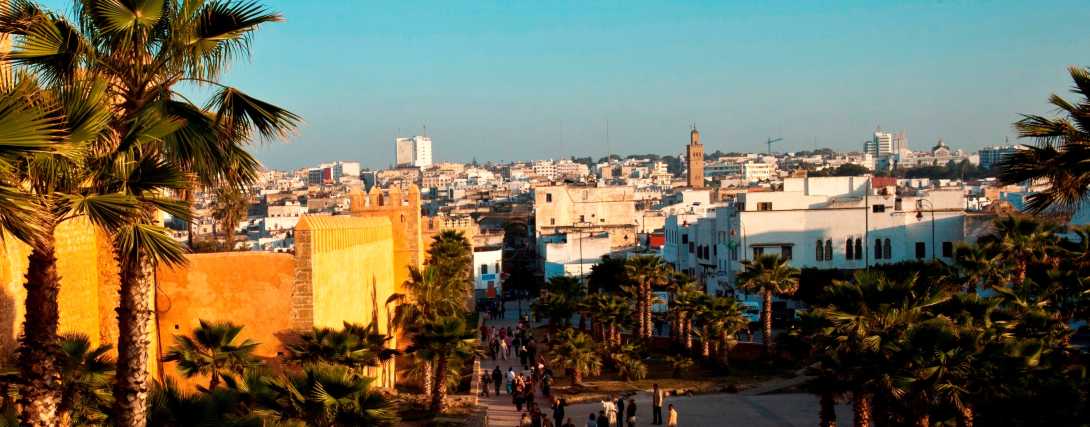
This year’s COP2 is being held in Marrakesh, Morocco, from November 7 to 18th.
<h3>"Before it"s too late" by Ferdaous Abouhaouari, Morocco</h3>
<p>[video: https://youtu.be/Ciz0rO9_VBo]</p>
<h3>"Gold Fish" by Yael Feldman, Israel</h3>
<p>[video: https://youtu.be/KKJYQqm5f-4]</p>
<h3>"High Hopes For Mother Earth" by Yacine Sichaib, Algeria</h3>
<p>[video: https://youtu.be/_farEwSM_w4]</p>
<h3>"How to cook the world" by Idan Elkabetz, Israel</h3>
<p>[video: https://youtu.be/qWKzfDEOqvk]</p>
<h3>"Lift" by Lior Eilam, Israel</h3>
<p>[video: https://youtu.be/TCR3g-gx6sU ]</p>
<h3>"Once Upon A Time On Earth" by Hiba Tawk, Lebanon</h3>
<p>[video: https://youtu.be/61H1cWV6dzg]</p>
<h3>"Saving the trees .. Save the earth " by Abdelkarim Hachicha, Tunisia</h3>
<p>[video: https://youtu.be/twJ4KeqvLE4]</p>
<h3>"Sunday Thoughts" by Nadia Asfour, Lebanon/USA</h3>
<p>[video: https://youtu.be/gn4B_4YZBY4]</p>
<h3>"We Are The World" by Naif Almalki, Qatar</h3>
<p>[video: https://youtu.be/VpHP2Q-oeB0]</p>
<h3>"You can do it" by Alshuraiqi, Oman</h3>
<p>[video: https://youtu.be/18UzeLVo_NE]</p>
We are just a few days from COP22, held this year in Morocco. For this Conference of the Parties we want you to take a deeper look into every sector affected by climate change. For this Special COP22 we compiled content related to the 16 subjects that will be discussed by world leaders in Marrakesh during those 12 days. Read articles, opinion blog posts and infographics, and watch videos on all topics.
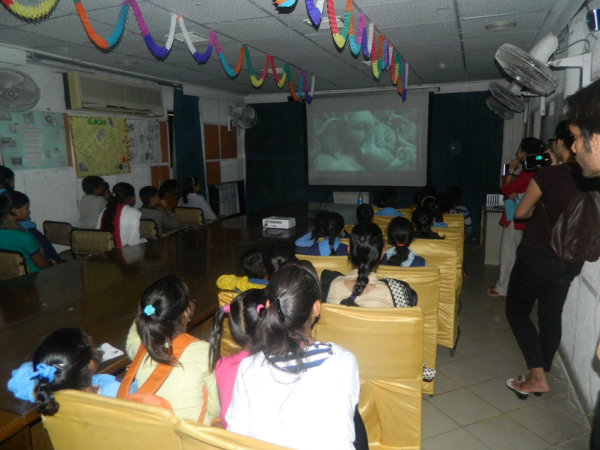
Towards Raising an Environmentally-conscious Generation in India
1.0 The Background
The importance of educating our children and youth in ensuring a sustainable future for all of us cannot be stressed enough. How else is a future generation of informed, aware, and environmentally-conscious citizens to be created if not through effective educational tools for our children and youth? The Indian Constitution states that it is the responsibility of every citizen to protect the environment. Underscoring the importance of environmental education, in 2003, a Supreme Court judgement made the teaching of environmental studies mandatory for all levels of formal education. Promoting environmental educational tools on a larger platform, in its 57th meeting in December 2002, the United Nations General Assembly proclaimed the UN Decade of Education for Sustainable Development, 2005- 2014 (DESD) 'emphasising that education is an indispensable element for achieving sustainable development'.
Placed in this context, Centre for Environment Communication has been consistently designing and conducting innovative environmental communication programmes employing various media such as films, on-ground communication, live demonstrations, interactive modules, communication via print and social media etc. These seminal programmes promote behaviour change in children and youth towards environmental sustainability via CEC’s five thematic centres.
2.0 Communicating Environment to Children
Children are naturally curious. They are forever full of the what, why, when, where and how of the world around them as most things are a new experience for them. But living as we are in cities where the connect with Nature is limited and oftentimes, children see nothing of it, their curiosity about Nature is stunted. Since they see little of it, they question little and consequently, understand even less about the how our natural ecosystem and our very existence are intertwined. Therefore, there is a need to create for them situations where they can feel the natural experiences in a tactile and emotive way, in a way that their curiosity is piqued. That will be the doorway to establishing a life-long connects with Nature. So, how is this curiosity about Nature to be piqued in the midst of the urban jungle?
3.0 Using Films as a Tool for ESD
CEC believes, based on its multiple experiences, that effectively employing evocative Nature films is a very powerful and impactful tool for ESD. Children are quick to grasp a situation and are able to very quickly think through and work towards solutions. So introducing them to the infinite wonders of nature via films, and thus leading them on to understand the environmental challenges today are a sure way of nurturing environmentally-conscious future citizens.
Films are the most impactful audio-visual medium that sends subliminal messages while creating the atmosphere wherein all senses are immersed in the experience, eliciting an emotional response. A film is thus a magical tool to raise eco-awareness in children. It captures stark realities in a manner that jolts us out of our sense of complacency. The series of film festivals organised by CEC has shown that there is perhaps no better way than films to impress upon our children that “environment” is not a “boring” subject but an interactive living eco-system that responds to our participation in ways that we can touch and see, every day.
CEC has organised a series of film festivals across schools and institutions for children and youth in Delhi and NCR, engaging more than 2000 children and youth in its various events and ongoing programmes. It has also launched its flagship programme, Green Buddies Film Festival, to engage children and youth on a sustained basis towards positive environmental action on a larger platform.
4.0 CEC Initiatives employing Films as ESD Tools: In Brief
I. Green Hub Festival 2016 Celebrating Northeast
Presented by: North East Network, Dusty Foot Production, and Centre for Environment Communication
Date: May 13-15, 2016
Venue: Green Hub, Jonak, Kumargaon, Tezpur, Assam
ACTIVITIES:
Films & Makers; Anthology of Shots; In Conversation; Expert Talks & Discussions; Musical Nite & Delightful Cuisine
Films being screened: Manas - Return of the Giants; Walking with the Wolves; Multiple Screening of Films by Green Hub Fellows from different parts of the Northeast.
II. THE ELEPHANT FESTIVAL – Celebrating World Wildlife Day, March 3, 2016

Participants: Children and youth from Prayas Juvenile Aid Centre, Tughlakabad and all its centres in Delhi; PVR Nest: NGO Vidya Foundation
Organised by: Centre for Environment Communication (CEC), Prayas Institute for Juvenile Justice and Adoptionscentrum
Partners: The Jackson Hole Wildlife Film Festival, The International Elephant Film Festival, PVR Nest, Green Future Foundation, Wildlife SOS and Magic Bus; in association with United Nations and CITES to celebrate the World Wildlife Day, March 3, 2016.
Activities: Film screenings; interactive workshop; Quiz and painting competition; Animal Pictionary; On the spot skit presentation on festival theme.
Films screened - 6: The Jungle Gang meets the Elephant by Krishnendu Bose; Elephant Talk 2015: Asian Elephants in the Wild; Elephants Never Forget; On the Right Track, and Living with Giants.
Workshop theme: Understanding the role of the Elephant in the eco-system; Conserving the Elephant: Challenges and solutions
Skit theme: Act for the Elephant
III. CEC CLIMATECONNECT Film Festival in Delhi and NCR
Classes: VII, VIII, IX, X and XI
No. of Activities: 10
Participating Schools: TSMS Faridabad, Lotus Valley School Noida, DPS Gautam Buddh Nagar and Tagore International School
Activities: Film screening/Session with Filmmakers, Interactive Panel Discussions, Expert Talks, A Reality Show, A Climate Change presentation by children of invited schools (one speaker per school – 5 minutes only), A filmmaking competition, a photo exhibition, An Al Gore presentation, A Snake and Ladder Climate Change Game, A Solar Power Cooker Live Demonstration.
Films Screened: Melting Paradise by Vijay Bedi, The Final Tide by Vikram Mishra, Carbon Merchants by Aaradhana Kohli Kapur and Shelter
Expert Talk and Discussion Topics
- Impact on Earth of a One-Degree Rise in Temperature
- Climate Change: Political Discourses
- Climate Change and Me: How I Am Connected to Climate Change
IV. CLIMA FILM FEST
Partners: United Nations Foundation, Good Relations India, Panos South Asia, CPREEC and M.O.P. Vaishnav College and Ennovate Global - CEC partner
In the run-up to the Secretary General Climate Summit at UN headquarters on September 23, Clima Film Fest ‘14 aimed at creating maximum buzz about the impacts of climate change on our lives. The objective of the festival was to tell people through the medium of films and discourses with the experts about what exactly is climate change, how it is impacting our lives and how one can adapt to it. The festival was also very important in the context of the recent release of Intergovernmental Panel on Climate Change Fifth Assessment Reports. A collection of compelling stories across India, highlighting evidences of the real impacts of and adaptations to climate change, underscored the spectacular festival.
Issues Explored
- Impact of climate change on natural resource-based livelihood in rural India.
- Climate change and rising sea levels in the Sunderbans.
- Local climate change impacts in Sunderbans in a participatory video.
- Landfill gas cleaning and flaring technology.
- India: Towards a clean and energy-efficient economy.
- Reducing Emissions from deforestation and degradation.
- Clean and energy-efficient technology for the small-scale glass industry.
- Govt-citizen partnership for sustainable cities.
- Towards sustainable habitats by using depleting natural resources to the benefits of all.
- Artificial glaciers to beat the drought in high-altitude areas.
- Impact on Earth of a one-degree rise in temperature.
- Small scale sustainable renewable energy programmes.
- Conservation of precious water resources such as wetlands.
- The ground reality of climate change and the global scenario.
Expert Discussion Session Topics
- Climate Change and the Coasts
- Communicating Climate Change: A Panel Discussion on Climate Change and Media
- Adaptation to Climate Change for the State of Tamil Nadu
- Climate Change and Chennai City
Films Screened
Missing, Where is my Home and The Forest Beautiful by Krishnendu Bose; are we ready to dig in by Saransh Sugandh; Negotiating Justice and Tales Of Gorakhpur: Path Towards A Climate-Resilient Future by Rishu Nigam; Redemption - A Redd + Story From India by Ahona Dutta Gupta; Ring The Changes by Kanishka Singh; Breathe Easy by Aditi Banerjee; Building For A Greener World by Rita Banerji; Ladakh's Artificial Glaciers by Rajendra Srivathsa Kondapalli; Strange Days On Planet Earth - The One Degree Factor by Rob Whittlesey; Lighter Burden, Brighter Future by Sanjay Barnela; Melting Paradise Ajay and Vijay Bedi; Mean Sea Level and Don’t Cut My Head Off by Pradip Saha

V. COMING SOON: CEC FLAGSHIP INITIATIVE - GREEN BUDDIES FILM FESTIVAL
Green Buddies Film Festival is India’s first niche green film festival exclusively for children and youth. It is a unique green festival which provides a stage for the voices of children and youth to be heard on the subject of the environment. For those who are already “green buddies” with the environment, this festival will be a unique opportunity to showcase their efforts via films and other environmental communication tools and formats; for those who are yet to understand the importance of conserving the environment, the festival will be an awakening, an initiation into the subject. The festival is an exclusive Flagship Initiative of the Centre for Environment Communication (CEC).
5.0 About Centre for Environment Communication (CEC)
Centre for Environment Communication (CEC) is committed to raising awareness among children, youth, and adults proactively on environmental issues and promoting action to concretise the awareness. Through a consistent and sustained call for awareness and action, CEC aims to gradually engender behaviour change, at large, towards the environment and make its conservation a part of our daily concerns towards creating a good life. CEC has partnered with UNICEF, DELHI GOVERNMENT, JACKSON HOLE WILDLIFE FILM FESTIVAL, PVR NEST for its various projects. CEC also received support from leading environmental organisations such as Climate Reality and Connect4Climate, University of Stirling, the UK for its various programmes.
Mission: Communicating for Creating Sustainable Societies
Thematic Centres: CEC has established five thematic centres: Climate Change Communication Centre (C4); Biodiversity Communication Centre (BCC); Water, Sanitation and Hygiene Communication Centre (WASHCC); Green Films Centre (GFC), and Corporate Employees Engagement Centre (CEEC)} which strategically spotlight its primary areas of engagement. The Centres seek to influence social, economic and instrumental change on environmental issues at the level of the society and consequently, catalyse appropriate policy interventions by the government.
Media coverage: CEC events have received wide coverage in a national dailies and magazines such as The Hindustan Times, the Times of India, The Hindu, Business Standard, Tribune, Rajasthan Patrika, Jagran, NewsX, and the UN World Wildlife Day events platform, among others.

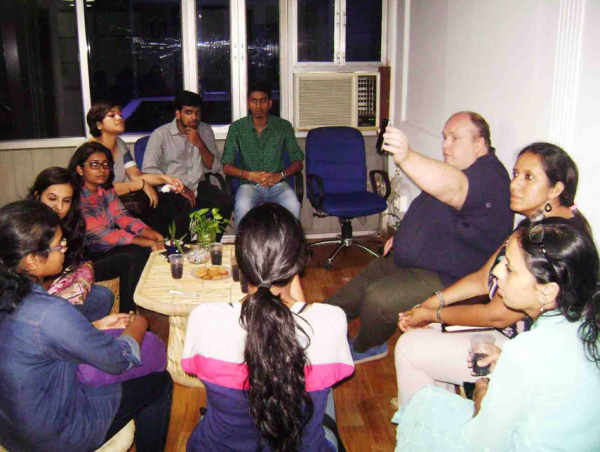
Collective efforts for far-reaching changes (climate change) are possible and realistic should politicians choose to listen to the voice of their young people.
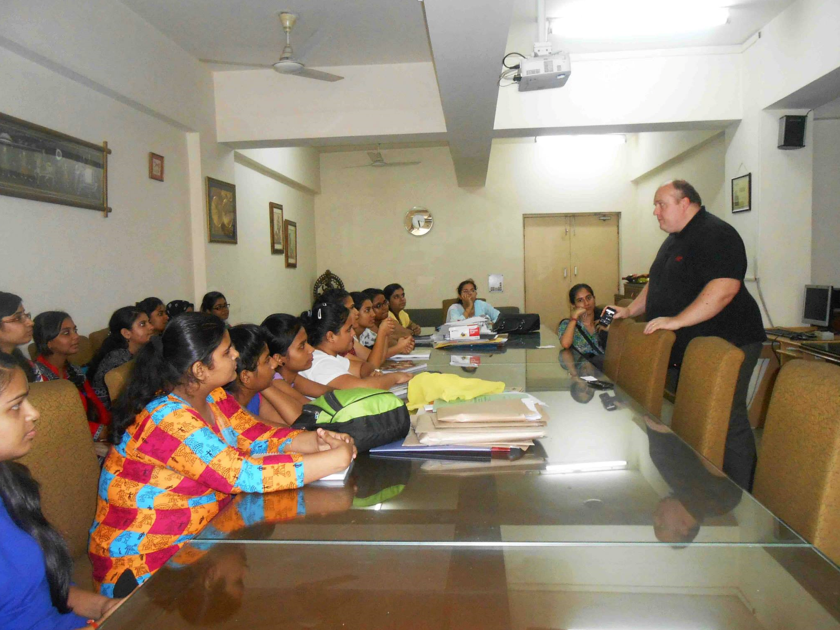
Students at New Delhi at another interaction with with Prof Mathew Hibberd
The 22nd United Nations Climate Change Conference of the Parties, COP22 marks the 22nd yearly session of the Conference of the Parties (COP21). Post the historic CoP21 held in Paris on November 30, 2015, India became the 62nd country to ratify the Paris deal with 14 more countries committing to ratify the deal before the end of 2016. With the ratification, “India has to implement an array of standards in its energy production and emission monitoring. India had also linked the ratification of the treaty to its admission to the Nuclear Suppliers Group. Getting the agreement implemented is a key strategic objective that President Barack Obama has set for himself before he leaves office in less than four months.” (The Hindu, October 2, 2016).
Against such a backdrop, as the world waits for the ratification from other countries so that the Agreement meets the need of slightly more than 3 percentage points to reach the 55 per cent threshold, it is pertinent to ask where does youth stand, against such a backdrop, in their understanding and perception of the climate issues. Our study, “ClimateAction: Youth Voices – A Four Nation Report” conducted across four nations, two Asian and two European — India, Vietnam, Italy and the UK — by the University of Stirling, Scotland and Centre for Environment Communication, New Delhi brings into sharp focus the pressing need to engage the youth into climate change talks to understand and platform their ideas, expectations and solutions to a cleaner climate.
The now worldwide Divestment Campaign is a powerful example of youth action for a clean climate. The divestment campaign which began on US college campuses in 2011 slowly grew into a nationwide divestment campaign with more than 400 US colleges and universities joining in. To quote the Guardian: “The speed at which the fossil fuel divestment campaign is growing seems to have rattled its opponents in the coal and oil lobbies.” So why not involve more and more youth to create a cleaner climate? What do the young people across the four nations involved in our study think about climate change?
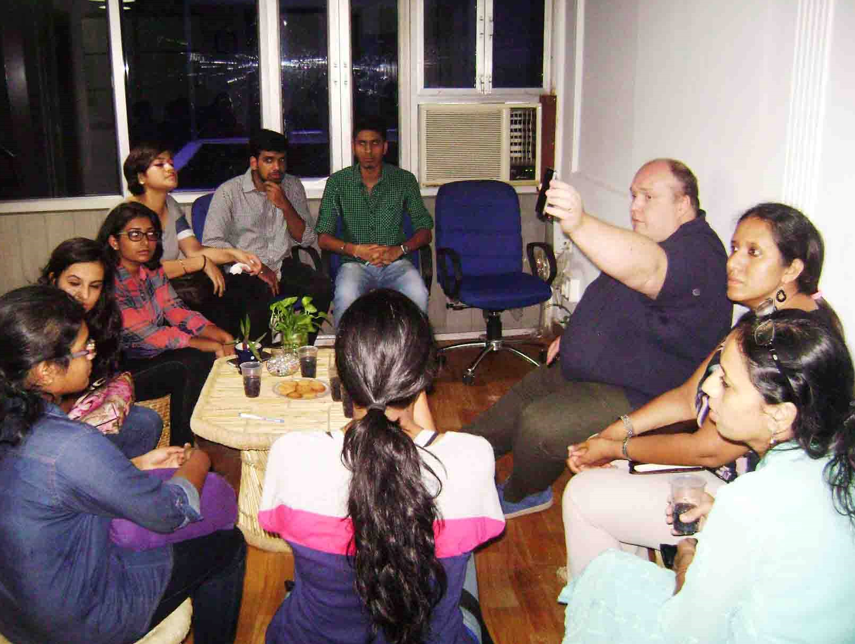
Students at New Delhi interact with Prof Mathew Hibberd
The ClimateAction: Youth Voices – Four Nation Report finds out that today’s youth believes they will inherit a deteriorating environmental situation from older generations, with some arguing that the young generation will be required to pay a greater price for profligacy of earlier generations. There was, however, uneven knowledge of key events relating to climate change. For example, some of our focus group members had not heard about the UN Climate Change Conference of the Parties (CoP) in Paris in November 2015. Only a small minority of focus group participants were actively involved in climate change campaigns. There was clear support for focus group findings that young people lack resources to take effective action; do not practice daily rituals that might be more eco-friendly; and that the lack of immediacy means that relevance of climate change to daily lives remains low.
An international binding agreement was considered vital in tackling key ecological problems of the 21st century. But many argued that when it comes to action there is still a lack of political will relating to the enforcement of climate change agreements. Youth from Europe and Asia remain pessimistic to the international community’s ability to implement such an agreement.
Youth look to definitive leadership and institutional support as a key ongoing requirement for climate change and look to local, national and international institutions, public and private, to provide that the stewardship and, crucially, the funding for infrastructural projects and services that can affect real environmental change. Their viewpoint came with the expectation of a substantive and viable solution at Paris, the absence of which, they said, would not only have a disastrous impact on environmental issues but would also undermine key social problems which, to their minds, have been worsened by climate change. One problem highlighted was the issue of migration where participants see a direct and causal link between mass movements of people, crop failure, extreme weather and climate change. Another pertinent issue was that of ‘free riders’ — those who seek to evade responsibility for climate change whether they are individuals or nations. Climate change is a collective issue requiring societal solutions that go beyond individual involvement.
The world’s poorest are seen to be disproportionately affected by climate change. This, paradoxically, lessens the importance of climate change among some, especially in India and Vietnam, as fighting poverty remains the key issue. There was strong support across focus groups for advanced national economies in the West, the USA, Canada, Europe, etc., to support the developing countries through financial or technical support in adopting climate change initiatives. While the UN was seen to be a key mediator in coming to a successful climate agreement, yet the dependence of its decision on the unanimity among its five permanent members — China, France, Russia, UK and USA — was seen to somewhat weaken its authority.
Youth across the four nations have come to believe that all the major institutions of our modern societies have largely failed to engage them in climate change issues, let alone to motivate and mobilise them into changing their behaviours towards more climate-conscious lifestyles. One of the prominent problems identified in this research is that common visions or mutual understandings of climate change have remained difficult to execute properly, whether one looks at international agreements or initiatives in affecting behavioural change.
It should be noted, however, that the cause for audience skepticism and pessimism found in this research is not simply due to the failure of the major institutions involved in the tackling of climate change. The story is, arguably, far more complex than lack of relevancy or a perceived lack of leadership or green-washing and so on. It relates more to deep-seated social vacuum at the macro and micro level in societies. Many people view climate change messages through ideological or social frameworks in line with their nationality, political beliefs, socio-demographic data – age (of especial importance for this study), gender, class, ethnicity, location, peer group, and so on. Climate change is tied closely to vaguer and contested notions of national, regional and local identities, cultural meanings and values and audience dissemination of texts and images. As such, climate change communications stretch beyond the realm of science, government policy and targets. As the Alliance of Religion and Conservation argues:
The emphasis on consumption, economics and policy usually fails to engage people at any deep level because it does not address the narrative, the mythological, the metaphorical or the existence of memories of past disasters and the way out (quoted in Hulme, 2009: 356).
Climate change communications, in other words, might generate much stronger impacts in communities if they speak to the reality of people’s life in a subtle, more “naturalised” way. The agreement at the Paris CoP needs to be ratified and enforced in ways that different people can understand and adopt. Key to this process are the leading industrialised countries and the leading developing nations such as BRICS. Special hope has been placed in President Obama to lead the USA and help secure success thus reinforcing his legacy as a forward-looking and progressive democratic president.
While young people are hopeful of the Paris Agreement being successfully ratified and implemented, they are also realistic enough to understand that all countries need to make major changes and sacrifices in order to help secure a better chance of limiting the damaging and pernicious impacts of climate change. Collective efforts for far-reaching changes are possible and realistic should politicians choose to listen to the voice of their young people.
